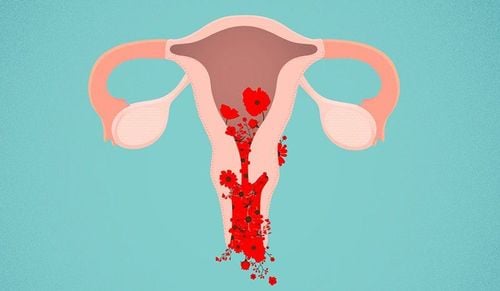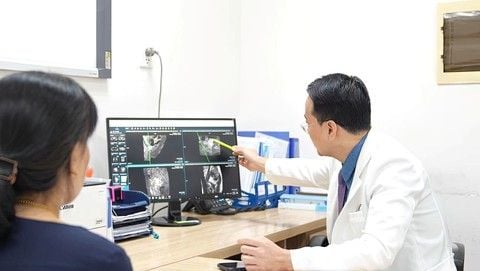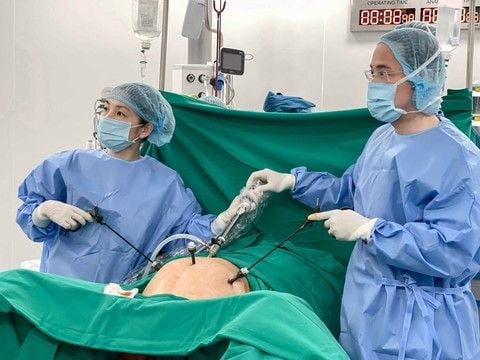This article was reviewed by Dr. Lại Thị Nguyệt Hằng, Specialist Level II, Obstetrics and Gynecology, Vinmec Hạ Long International Hospital.
Cervical polyps are formed due to chronic inflammation of the cervix and are commonly observed in women aged 30–50. These are small tumors that may originate from the cervix or uterine cavity. When polyps are present, a woman's fertility can be significantly reduced.
Small polyps may obstruct the meeting of sperm and egg, while larger polyps can block or seal the cervix, posing potential health risks. Most polyps are benign, but in some cases, if left untreated, they may progress to a precancerous state.
1. What are cervical polyps?
Uterine polyps are small, soft growths inside the uterus. They originate from uterine glandular tissue known as the endometrium. These growths develop within the endometrium, the inner lining of the uterus where the fetus grows. Polyps are attached to the endometrium via a thin stalk or a wide base and extend into the uterine cavity. Their sizes vary from as small as a sesame seed (a few millimeters) to as large as a golf ball (several centimeters). Multiple polyps can exist simultaneously within the uterus.
While most uterine polyps are noncancerous, they can cause menstrual irregularities or fertility issues. Some women with uterine polyps may not experience symptoms, but reliable medical options exist for their removal upon diagnosis.
2. Causes of cervical polyps
Doctors still lack scientific evidence to determine the exact reasons why women develop cervical polyps. However, it may be related to changes in hormone levels. Monthly fluctuations in estrogen levels direct the thickening and shedding of the endometrium during the menstrual cycle. An overgrowth of this lining leads to the formation of polyps.
Certain risk factors increase the likelihood of cervical polyps, including age. The condition is common in women aged 30–50 and rarely occurs in those under 20. This could be due to estrogen level changes before and during menopause. Additionally, obesity, high blood pressure, and the use of breast cancer treatment drugs like tamoxifen can elevate the risk of cervical polyps.

3. Symptoms of cervical polyps
Cervical polyps often present no symptoms, especially when they are small or solitary. However, the most common sign is bleeding. You should consult a doctor if you experience the following symptoms:
- Irregular menstrual cycles, unpredictable duration: The most common symptom. Typically, women have menstrual periods lasting 4–7 days, occurring approximately every 28 days, with normal variations between 21–35 days. About half of women with cervical polyps experience irregular cycles.
- Prolonged or heavy menstrual bleeding (menorrhagia), bleeding between periods, or bleeding after menopause or sexual intercourse. Cervical polyps account for about 25% of abnormal bleeding cases.
- Infertility or bleeding during pregnancy. Polyp detection during medical examinations may also occur.
Most cervical polyps are benign. However, a small percentage may develop into cancer later, especially after menopause. Symptoms of polyps are similar to those of cervical cancer. Therefore, any signs require a doctor's attention for timely diagnosis and treatment.
Can women with cervical polyps become pregnant? Cervical polyps can cause fertility issues, making it difficult for affected women to maintain a pregnancy or increasing the risk of miscarriage. Polyp growth may prevent fertilized eggs from attaching to the uterine wall or block the fallopian tubes, hindering embryo implantation. Some studies suggest that removing polyps may improve pregnancy chances, though there is no conclusive evidence proving its effectiveness for everyone.
4. Diagnosis of cervical polyps
Several diagnostic methods can be used:
- Transvaginal ultrasound: A wand-like device is inserted into the vagina to emit sound waves, producing an image of the uterus on a computer.
- Saline infusion sonography: A thin catheter introduces saline into the uterus during transvaginal ultrasound, enhancing the visibility of polyps.
- Hysteroscopy: A microscope is inserted through the vagina and uterus to view the inner lining. Polyps, if visible, can be removed during the procedure.
- Endometrial biopsy: A soft plastic instrument collects a tissue sample from the uterine lining for laboratory analysis, checking for cancer cells.
- Polyp curettage: Performed in the operating room, this procedure uses a curette to scrape and remove polyps or tissue for examination.
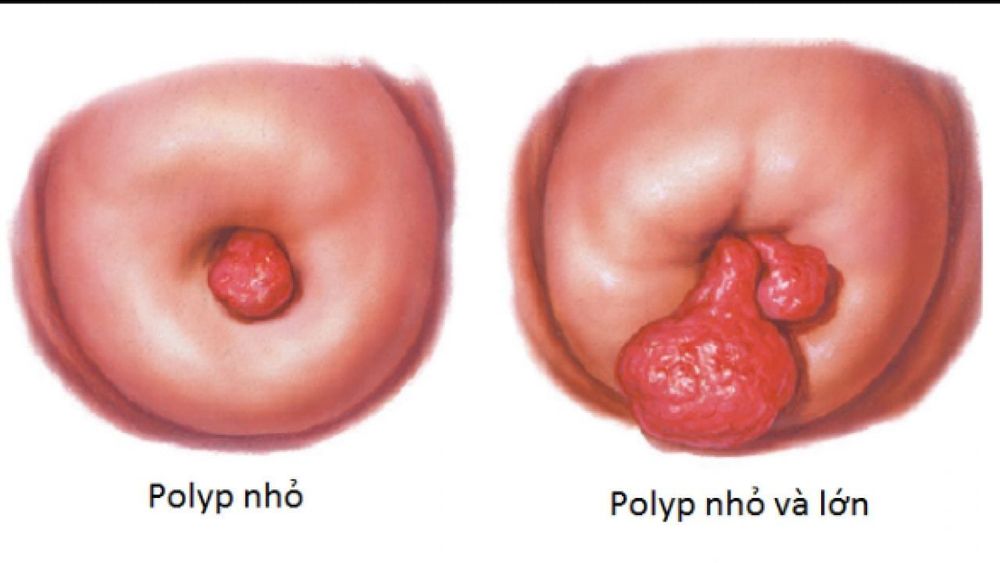
5. Treatment of Cervical Polyps
Treatment for cervical polyps may not be necessary if there are no symptoms and the polyps are non-cancerous. In mild cases, they can disappear on their own. However, if a woman is post-menopausal or at risk for uterine cancer, it is recommended to remove the polyps.
Medications like progestin or gonadotropin-releasing hormone agonists can control hormone levels, shrink the polyps, and alleviate symptoms like heavy bleeding, although symptoms may return after stopping the medication.
The surgical method commonly used by doctors to remove polyps is often performed simultaneously with the diagnostic procedure, such as hysteroscopy or curettage. Instead of making an incision in the abdomen, surgical instruments can be inserted through the vagina and cervix to extract the polyps. If the uterine polyps are found to contain cancerous cells, surgery to remove the entire uterus (hysterectomy) is mandatory.
Treatment for cervical polyps is relatively simple. To ensure good health and proper preparation for pregnancy, women are advised to undergo regular gynecological check-ups every three months. Early detection of abnormalities allows for timely treatment, preventing long-term health issues and complications with future pregnancies.
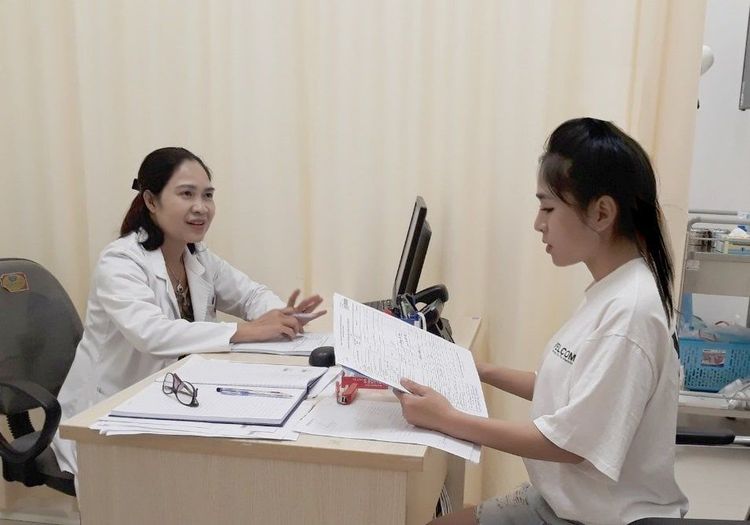
Gynecological conditions are crucial for women to address as they significantly impact health and reproductive functions. To help women detect infections early, enabling simpler and more cost-effective treatment, Vinmec International General Hospital offers a Basic Gynecological Screening Package.
The basic gynecological screening package for women who experience symptoms such as:
Abnormal vaginal bleeding.
Menstrual problems: unusually long cycles, irregular periods.
Abnormal vaginal discharge (foul smell, unusual color).
Pain or itching in the genital area.
Female clients with risk factors such as poor personal hygiene, unsafe sexual practices, or a history of abortions.
Female clients with other symptoms such as abnormal vaginal discharge, itching, genital pain, or abnormal vaginal bleeding.
This package is available at the following Vinmec hospitals:
- Vinmec Times City International Hospital
- Vinmec Hai Phong International Hospital
- Vinmec Ha Long International Hospital
- Vinmec Da Nang International Hospital
- Vinmec Nha Trang International Hospital
- Vinmec Phu Quoc International Hospital
To arrange an appointment, please call HOTLINE or make your reservation directly HERE. You may also download the MyVinmec app to schedule appointments faster and manage your reservations more conveniently.
Reference source: webmd.com; clevelandclinic.org
To arrange an appointment, please call HOTLINE or make your reservation directly HERE. You may also download the MyVinmec app to schedule appointments faster and manage your reservations more conveniently.


